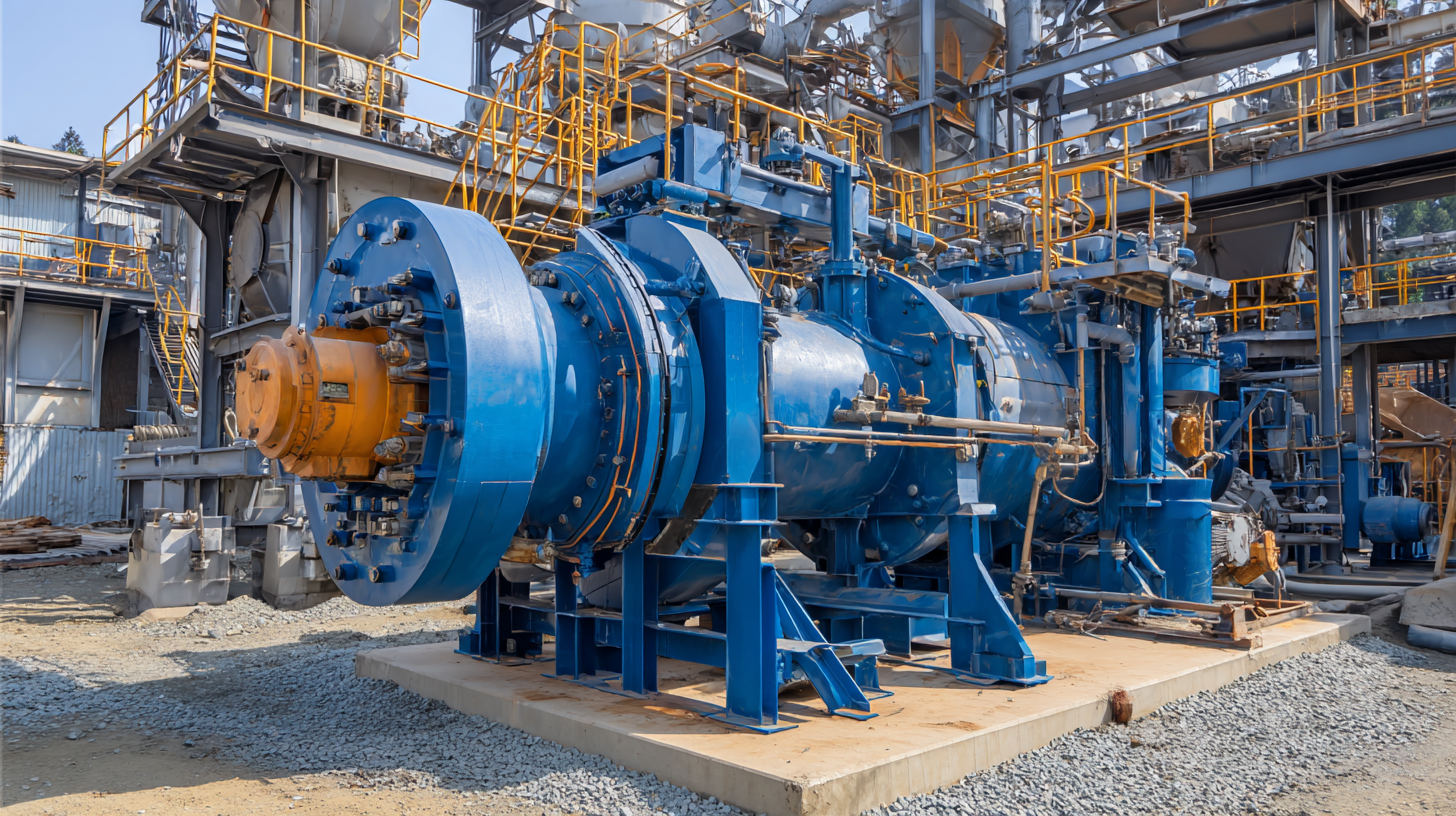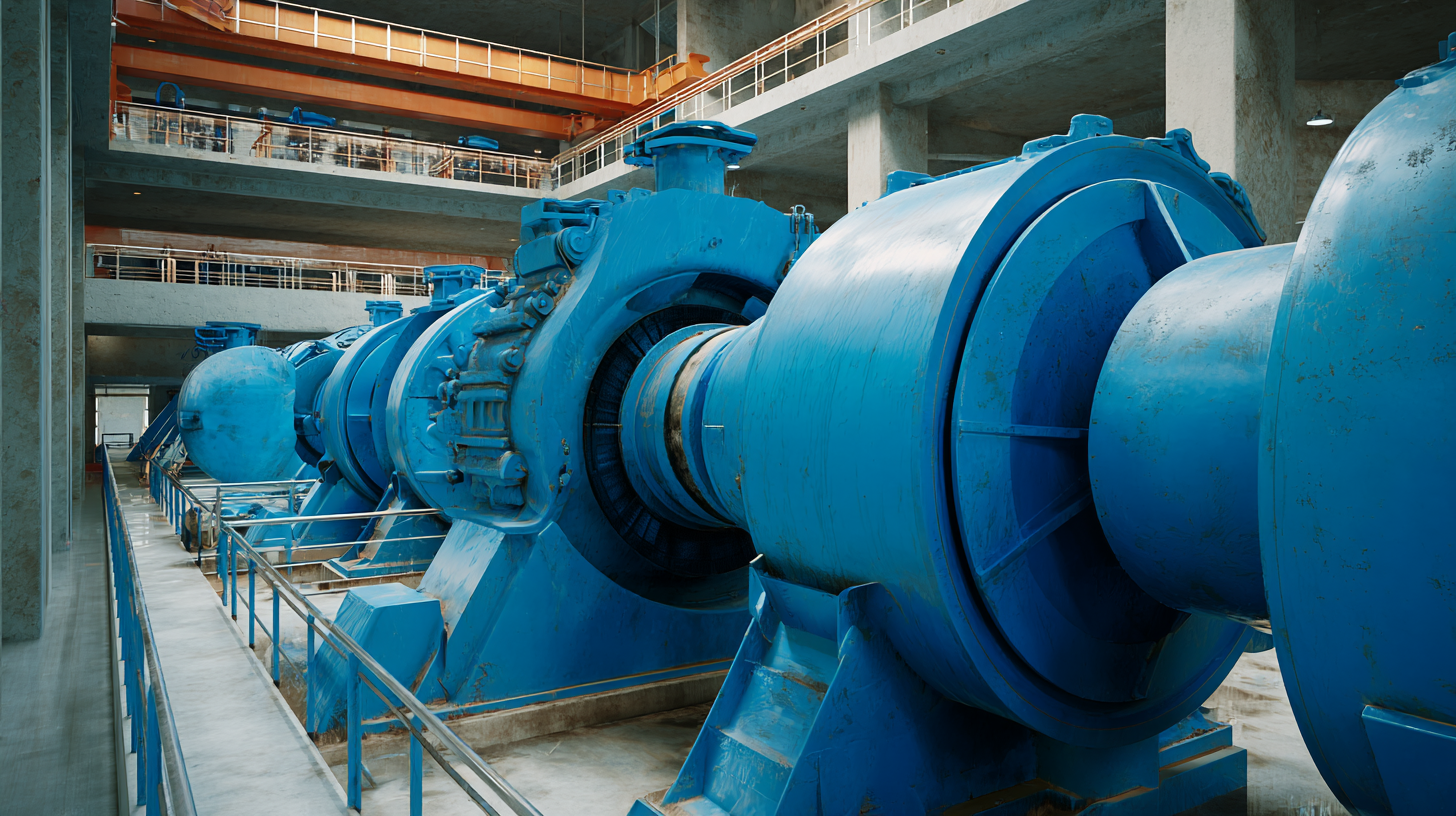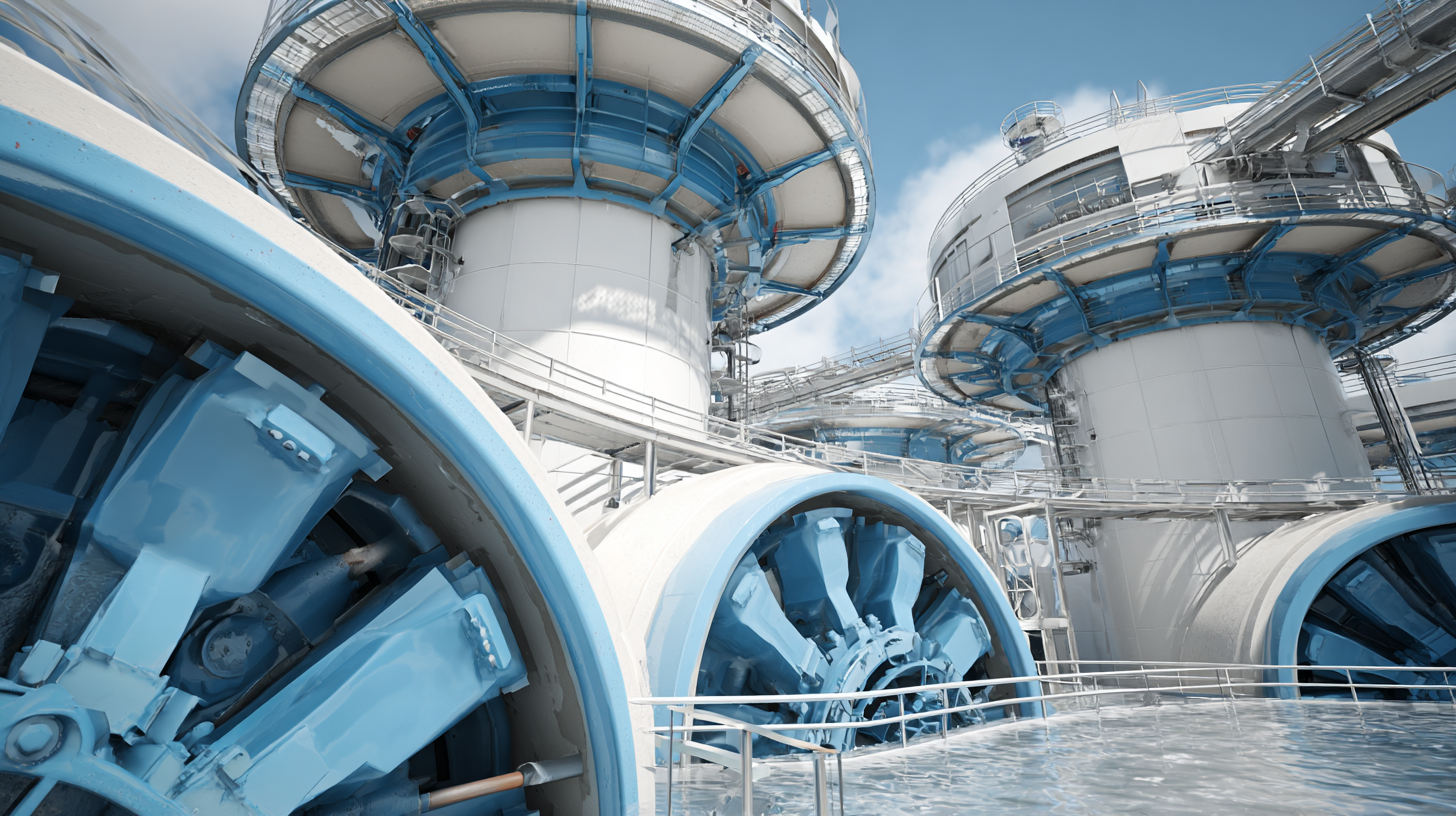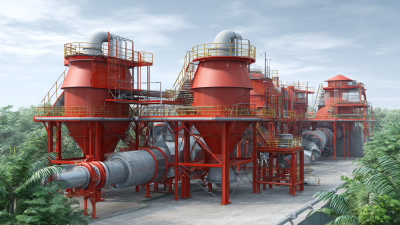

Hydrocyclones have really become a key player when it comes to improving how effectively we separate stuff in the oil and gas world. If you’ve read any recent industry reports, you’ll see just how much these advanced separation techs are making a difference in day-to-day operations. I was looking at a market research report by MarketsandMarkets, and it seems like the global hydrocyclone market is expected to jump from about USD 3.2 billion in 2021 to roughly USD 4.5 billion by 2026 — that’s a solid compound annual growth rate of around 6.5%. Over here at Shanghai Shangjiang Petroleum Engineering Equipment Co., Ltd., we’re totally dedicated to staying ahead of the curve. We’re constantly working to improve our cyclone separation products and tech to help the industry push toward smarter, greener practices. This means oil and gas operators can keep up with tighter regulations while still cranking out maximum productivity. So, in this guide, I want to share some insights and practical tips on mastering hydrocyclones—hoping to make the whole process a bit clearer and more doable for you.

Hydrocyclones might not be the most glamorous part of wastewater treatment, but trust me, they’re pretty crucial. These devices essentially use centrifugal forces—a fancy way of saying they spin things around—to sift out solids from liquids. It all comes down to fluid dynamics: the different densities of the particles and liquids help the cyclone do its thing. Lately, with surface water battling of all this excess nutrients leading to those pesky algal blooms (we call it eutrophication), making sure hydrocyclones work their best is more important than ever. Some studies show that tweaking operational settings can boost how well they separate solids by more than 30%. That’s a big deal when it comes to cleaning up water more efficiently and dealing with things like algae and phytoplankton in wastewater.
If you want to get the most out of your hydrocyclones, a couple of tips might help. For starters, keeping an eye on the feed pressure and adjusting the inlet shape to reduce turbulence can make a real difference. Turbulence can throw the whole separation off, so tamping that down is smart. Also, tailoring the size and shape of the cyclone—like going for smaller units when fine particles are involved—can really improve recovery rates, which is important for controlling stuff like tiny plankton in the water.
Understanding how these hydrocyclones work isn’t just a neat technical thing; it’s also key to being more sustainable. Modern monitoring tools let facilities make adjustments on the fly, keeping separation efficient and making sure we meet environmental standards. When we do that, we’re not only protecting aquatic life but also taking smarter, more responsible care of our water resources.
So, when it comes to how well hydrocyclones do their job at separating particles from fluids, there are a bunch of key factors that really matter. I read somewhere from the American Society of Civil Engineers that tweaking things like the inlet pressure, the size of the hydrocyclone itself, and the specific gravity of the materials involved can make a big difference. For example, bumping up the inlet pressure usually ramps up the centrifugal forces, which can help separate those tiny particles better—and you might see your efficiency jump by as much as 15%. Pretty neat, right?
Another thing that’s super important is the actual shape of the hydrocyclone. According to some research from the International Journal of Mineral Processing, the cone angle and the ratio of length to diameter directly affect the size of particles that get separated out — kind of what we call the cut size. If you go for a narrower cone angle, you can get finer separations, but watch out — it might also make blockages more likely. Industry folks often suggest that fine-tuning these geometric details can boost both the separation efficiency and the overall throughput by around 20 to 30%. So, basically, understanding and adjusting these key factors is pretty much essential if you want your hydrocyclone to perform at its best.
| Parameter | Description | Impact on Separation Efficiency | Optimal Range |
|---|---|---|---|
| Feed Density | Density of the slurry entering the hydrocyclone | Affects the settling velocity of particles | 1.5 - 2.0 g/cm³ |
| Inlet Pressure | Pressure of the slurry entering the hydrocyclone | Higher pressure can improve separation efficiency | 2 - 6 bar |
| Cut Size | Size of particles that are separated | Smaller cut sizes can lead to finer product recovery | 50 - 150 microns |
| Cyclone Diameter | Diameter of the hydrocyclone body | Larger diameter can reduce pressure drop and wear | 40 - 150 mm |
| Apex Size | Size of the opening for the underflow discharge | Influences the amount of coarse material discharged | 10 - 30 mm |
Hydrocyclones are pretty much crucial in the mineral processing world — everyone knows they’re top-notch when it comes to sorting particles by size and density. But let’s be real, operators often run into some bumps that mess with peak performance. One common headache is inconsistent feed density, which can cause the separation process to keep going haywire. To tackle this, it’s really important to have a well-thought-out feed system that keeps the flow steady and the density in check. That way, your hydrocyclone can do its thing under ideal conditions.
Another thing that pops up a lot is the wear and tear on those liners. Over time, they get battered, and that can mess with how well the separation works and how long your equipment lasts. Regular checks and swapping out worn parts before they completely fail is key. Plus, considering tougher, wear-resistant materials and doing routine inspections early on can save you quite a headache down the line.
And don’t forget, scaling at the underflow and overflow outlets can throw a wrench in the process, too. Keeping up with regular maintenance, and sometimes using anti-scaling agents in tricky spots, can really help keep things running smoothly. If you stay ahead of these issues, you’ll boost the hydrocyclone’s performance, get cleaner separation, and overall, just run a more efficient operation.
You know, feed conditions really make a big difference when it comes to how well a hydrocyclone can do its job. Small tweaks to the feed flow rate, pressure, and solid concentration can actually make a noticeable difference in separating materials more effectively. For example, finding that sweet spot for the feed flow rate helps create the perfect vortex inside the hydrocyclone, which in turn improves how particles are sorted. On the flip side, if you push the flow rate too high, the hydrocyclone can get overwhelmed—kind of like overloading a machine—which drops its efficiency and risks some stuff slipping through the cracks.

Also, the characteristics of the feed, like the size and density of the particles, really matter when it comes to how well the hydrocyclone works. Having a good mix—particles that are neither too fine nor too coarse—actually helps things run smoother. The fine stuff tends to exit with the overflow, while the heavier, coarser bits settle down into the underflow more easily. Of course, keeping an eye on these conditions and making regular adjustments is key for operators trying to get the most out of their equipment—more throughput, better separation, the whole nine yards.
In the end, it’s all about fine-tuning and staying on top of these variables to keep everything running smoothly and efficiently.
Hydrocyclones have really become key players when it comes to separation stuff in tons of industries like mining, wastewater treatment, and chemical processing. Getting their performance just right can make a huge difference in how efficiently things get separated, which ultimately cuts down costs and boosts overall productivity. And the cool part? There are plenty of ways to optimize them, from tweaking their design to changing how we run them day-to-day.
One trick that works pretty well is messing around with the inlet pressure and flow rate. When you fine-tune these, you can actually cut down on turbulence and keep the flow inside more steady. That stability means particles—whether they're big or small—separate better based on their size and density.
**Pro tip:** Don’t forget regular maintenance! Replacing wear plates and liners when they start to show wear is super important to keep things running smoothly. Also, investing in smart monitoring systems can be a game-changer—tracking how everything’s performing in real time allows you to make quick adjustments to keep things optimized. Oh, and experimenting with the size and shape of vortex finders can really boost how well the hydrocyclone does its job, so don’t be afraid to play around with those too.
When you're looking to boost the performance of hydrocyclones, getting a good grasp of how different design choices impact things is super important. Things like the inlet shape, cone angle, and the size of the apex can really make a difference in how well the separation works. For example, if the inlet design isn't dialed in right, it can mess with the flow pattern and create a lot of turbulence, which isn't great and can lead to poorer separation results.
**Pro tip:** It's a smart move to run some computational fluid dynamics (CFD) simulations—this helps you see exactly how the flow is behaving so you can tweak your design more confidently.
Another thing to keep in mind is the cone angle. A steeper cone might let you process more material faster, but it could also hurt the separation quality. On the flip side, a wider cone usually means better separation but might slow your overall flow. Don't forget about adjusting the apex diameter—this can help you control the particle size that ends up in the underflow, directly affecting how efficient the whole setup is.
**Another tip:** Try out different combinations of these design parameters and keep an eye on your performance metrics. Keeping a detailed record of what you change and what results you get can really help identify what works best and where you can improve.

: Key factors include inlet pressure, hydrocyclone diameter, specific gravity of materials, geometry of the hydrocyclone (cone angle and length-to-diameter ratio), and stable feed density.
Increasing inlet pressure enhances centrifugal forces, which can improve the separation of fine particles and increase efficiency by up to 15%.
The cone angle and the length-to-diameter ratio affect the cut size of particles. A narrower cone angle allows for finer separations but increases the risk of blockage.
Operators often face challenges such as inconsistent feed density, wear and tear of hydrocyclone liners, and scaling of underflow and overflow outlets.
A well-designed feed system that maintains stable flow and density is crucial for optimal hydrocyclone operation to avoid fluctuating separation efficiency.
Regular monitoring and timely replacement of worn-out components, utilization of wear-resistant materials, and routine inspections are essential for maintaining performance.
Operators should implement regular maintenance schedules and use anti-scaling agents in high-risk environments to manage scaling of underflow and overflow outlets.
Techniques such as fine-tuning inlet pressure and flow rate, replacing wear plates, and experimenting with vortex finder dimensions can significantly enhance separation capabilities.
Regular maintenance, including replacing wear plates and liners, helps prevent performance degradation and maintains overall separation efficiency.
Advanced monitoring systems enable real-time tracking of operational metrics, allowing for prompt adjustments to optimize separation outcomes.
In our latest blog post titled "Mastering Hydrocyclones: The Complete Guide to Optimizing Separation Efficiency," we take a deep dive into what makes hydrocyclones tick and why they’re so important in the oil and gas world. We chat about the main factors that can affect how well these devices do their job, and we also cover some of the common issues folks run into when operating them — plus, practical tips to troubleshoot and improve performance. It’s also all about understanding how feed conditions and new tech can really boost hydrocyclone results.
We also look into how different design aspects influence how effective these cyclones are, tossing in some helpful insights so industry pros can get the most out of their equipment. As a company passionate about improving separation tech, Shanghai Shangjiang Petroleum Engineering Equipment Co., Ltd. is constantly pushing the envelope with innovative cyclone products, making sure our customers see top-notch efficiency in their operations.






